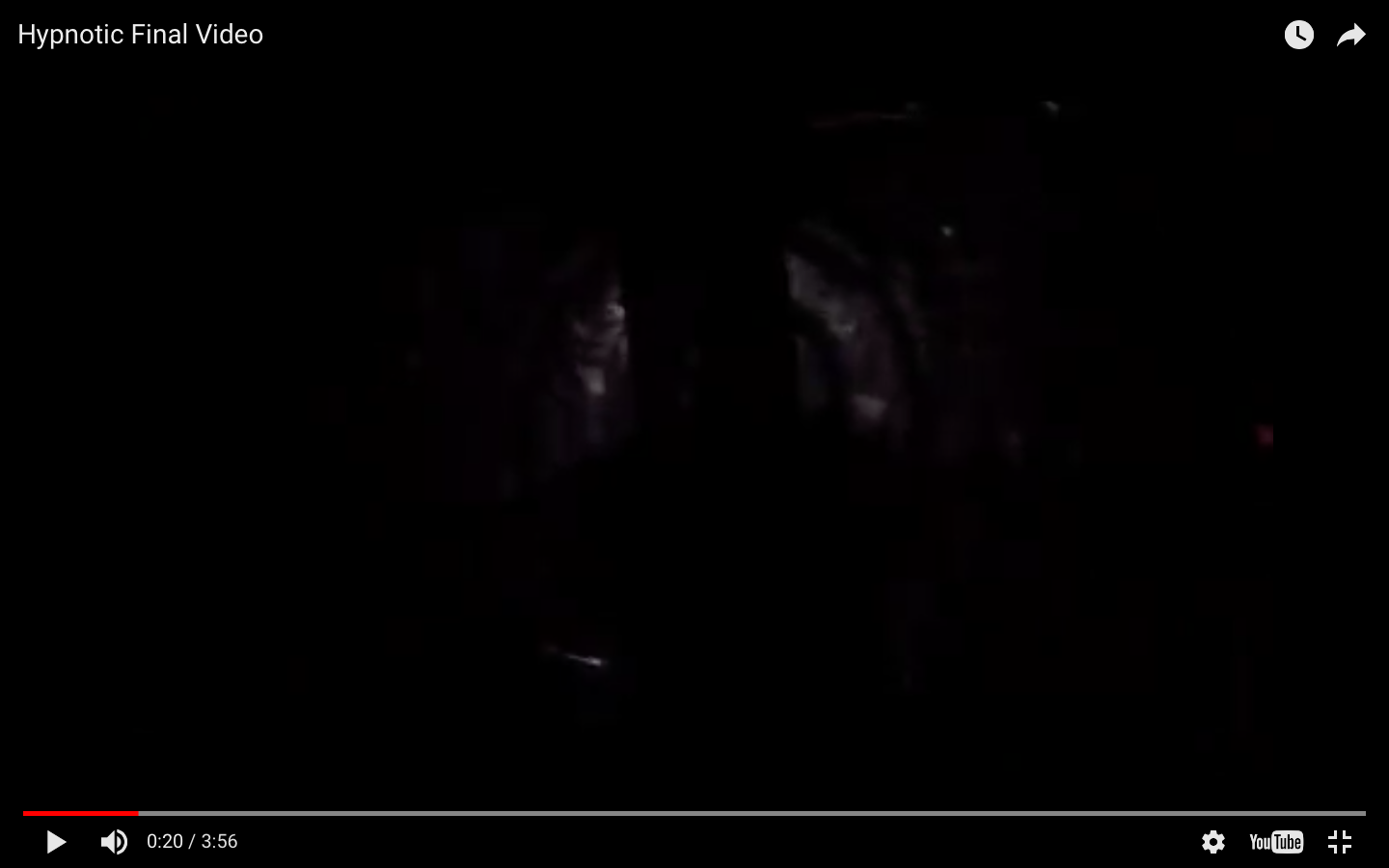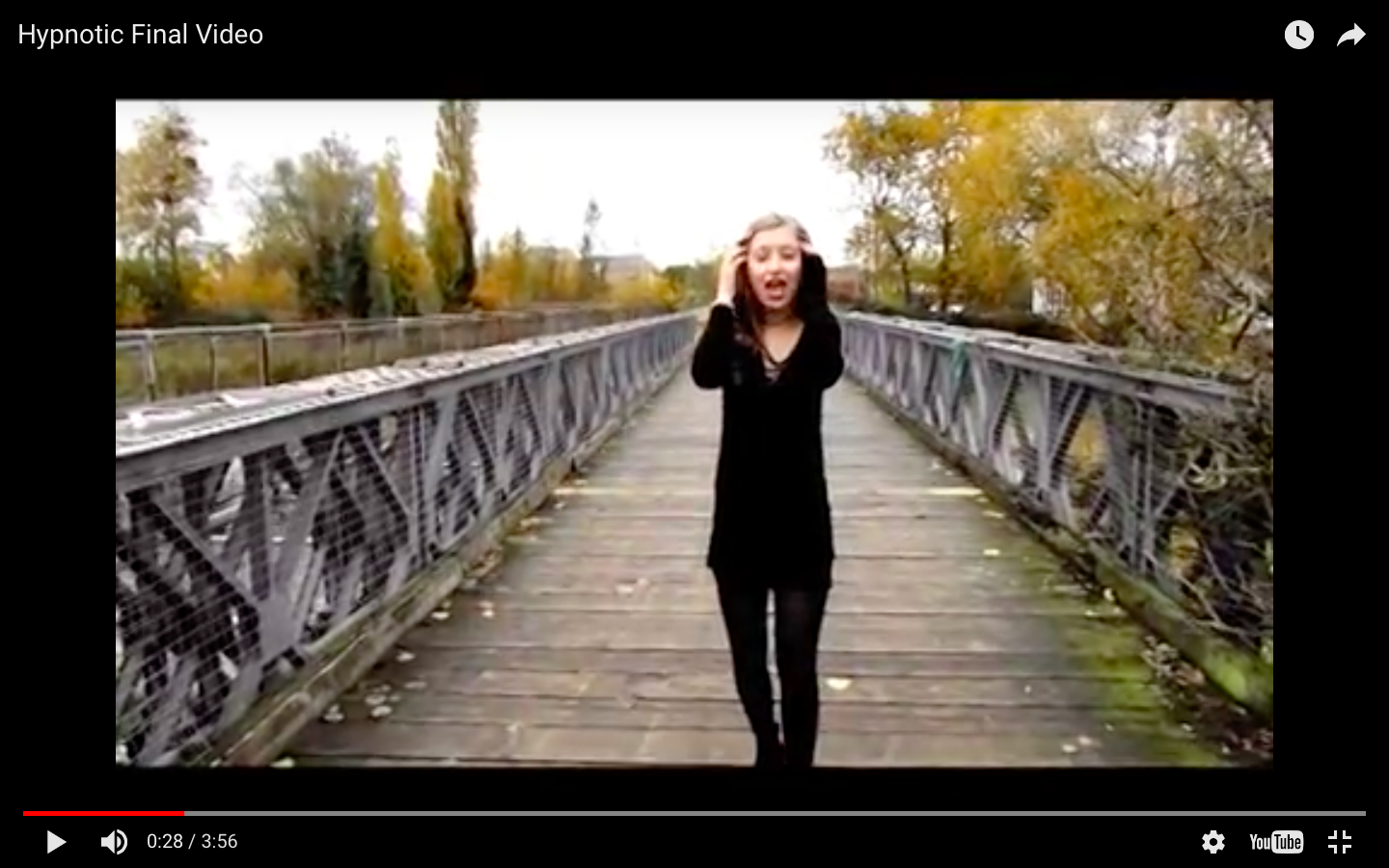Theories - Carol Vernallis and Andrew Goodwin
Carol Vernallis
Carol Vernallis' theory looks at the importance of camera, editing, diegesis and narrative in a music video. She explains how these are the features that make a music video successful.
1. Narrative - Vernallis said that a narrative in a music video can be partial or fragmented. It's ok for the narrative to not answer the questions, can be a montage rather than one clear focus.
Carol Vernallis
Our music video has a narrative through how we have linked in the visuals with the lyrics of the song. For example, the song talks about a man taking over her - so we have presented the artist in the video to be losing control of herself and be insane.
Carol Vernallis
2. Editing - The video may disrupt or break the conventions of continuity editing, Jump cuts, breaking 180 rule, thought beats, juxtaposed frames and graphic matches.
Editing was defiantly one of the main features of our music video through how we ended up with 210 shots. It also was the thing which emphasised the psychotic vibe of our artist as we used editing techniques like blur and ghosting.

Carol Vernallis
3. Camera -Establishing shots are key features, medium/close up shots establish the artists. The style of framing is quite distinctive and the camera may move with the lyrics.
In our music video, one of the main features, alongside the editing was the variety of camera shots we got. We used a lot of in our video handheld footage, where the artist filmed from her point of view and was the director. As well as this, we also got a lot of mid shots and long shots of the artist - so we had variety, meaning it was more interesting.

Carol Vernallis
4. Diegesis - Is the setting of a music video. Repetition is key as some frames will appear more important than others due the way they have been shot.
In our music videos we had a variety of locations - however, we always made sure to repeat the location. For example, one of our most successful locations was Ripleys 'Believe it or Not' museum, so we made sure to repeat and include a lot of this footage as it was most visually appealing.

Andrew Goodwin
Andrew Goodwin said that music videos ignore common narrative and they are essentially just advertisement (for the artist and their album). Goodwin said that we make up our own meaning of a song in our mind when we listen to the soundtrack.
1.Relationship between lyrics and the visuals, which illustrate, amplify or contradict the lyrics.
In our music video, we illustrate and amplify the lyrics within the visuals. This is due to how the lyrics describe the artist with lose of control and insanity. Additionally, we show this in our music video through locations like the mirror maze through how shots in the mirror maze show the artist from all different angles; showing she is losing control. On the other hand, we also amplify the lyrics in the digipak through the images that have been photoshopped as the image shows the artist twice - showing she is losing herself.

2. Thought beats: seeing the sounds (the relationship between music and the visuals, which illustrate, amplify or contract lyrics).
We have thought beats in our music video at the start when the music chimes and the shots flicker in time. Additionally, we alter our editing and visuals, in time to the pace of the music.

3. Genre-related style and iconography present (mise en scene).
Our video has mise en scene which matches with the genre of our music video. This is due to how all the outfits which are worn in the music video are black - which matches with how most of the visuals in our music video are dark. For example, the tunnel location in our music video is dark, so the black dress worn by the artist matches the vibe of the location.
In contrast, if our music video had a theme of rap, the artist could be wearing a tracksuit or chains etc.


4 . Multiple close-ups of the main artist or vocalist:the creation of a star image to promote a recognisable brand image.
In our music video we made sure there was a lot of close up shots of the artist. For example, the shots where the artist is on the floor and when the artist holds the camera.


5. Voyeurism often plays a major part, especially in relation to females.
Voyeurism doesn't take place in our music video due to how the artist isn't sexualised.

6. Intertexual references to other media texts may be present, especially in humorous videos.
In our music video, we didn't have any intertextual references to other media texts.